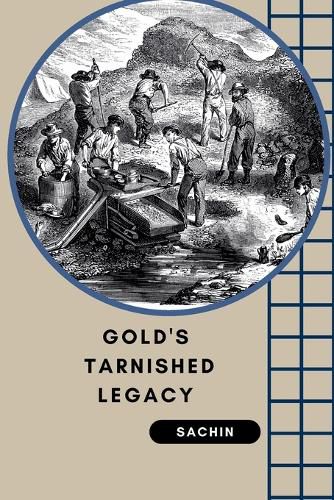Readings Newsletter
Become a Readings Member to make your shopping experience even easier.
Sign in or sign up for free!
You’re not far away from qualifying for FREE standard shipping within Australia
You’ve qualified for FREE standard shipping within Australia
The cart is loading…






The South African gold mining industry has historically been a major driver of the country's economy as well as socio-political landscape (Smit, 2013). For over a century it has provided employment, investments, infrastructure, and taxes (Onn and Woodley, 2014; Schonfeld et al., 2014), and been responsible for the development of dozens of cities and towns across the country, most notable of which is Johannesburg (Naicker et al., 2003; Durand, 2012; Ojelede et al., 2012; Kneen et al., 2015). Gold was first discovered in the Witwatersrand Basin in 1886, a geographical feature that was once the largest gold resource in the world (Minerals Council South Africa, n.d.). This discovery transformed South Africa's agricultural economy into a mining economy, and opened the country up for international trade (Durand, 2012; Rand Refinery, 2013). However, the gold mining industry is also responsible for a legacy of inequality, exploitation, damaged family structures, health impacts and environmental degradation (Lawrence and Samkin, 2005; Durand, 2012; de Villiers et al., 2014; International Human Rights Clinic (IHRC), 2016). Furthermore, it is important to note that apartheid is inextricably linked to the gold mining industry in particular (de Villiers et al., 2014; Benchmarks Foundation, 2017). The industry has left a legacy of ownerless and abandoned mines and tailing storage facilities that compromise the health and safety of nearby communities and eco-systems due to air, water and soil pollution including but not limited to acid mine drainage (Winde and van der Walt, 2004; Duruibe et al., 2007; Durand, 2012; Bobbins, 2015). Furthermore, the gold industry is in decline and global commodity markets are turbulent (Mudd, 2007; Hartnady, 2009; Chamber of Mines of South Africa, 2017). From 2004 to 2016, South Africa's percentage of global gold production fell from 13.5% to 4.4% (Chamber of Mines of South Africa, 2017). Furthermore, the Witwatersrand reserves are nearly exhausted
$9.00 standard shipping within Australia
FREE standard shipping within Australia for orders over $100.00
Express & International shipping calculated at checkout
The South African gold mining industry has historically been a major driver of the country's economy as well as socio-political landscape (Smit, 2013). For over a century it has provided employment, investments, infrastructure, and taxes (Onn and Woodley, 2014; Schonfeld et al., 2014), and been responsible for the development of dozens of cities and towns across the country, most notable of which is Johannesburg (Naicker et al., 2003; Durand, 2012; Ojelede et al., 2012; Kneen et al., 2015). Gold was first discovered in the Witwatersrand Basin in 1886, a geographical feature that was once the largest gold resource in the world (Minerals Council South Africa, n.d.). This discovery transformed South Africa's agricultural economy into a mining economy, and opened the country up for international trade (Durand, 2012; Rand Refinery, 2013). However, the gold mining industry is also responsible for a legacy of inequality, exploitation, damaged family structures, health impacts and environmental degradation (Lawrence and Samkin, 2005; Durand, 2012; de Villiers et al., 2014; International Human Rights Clinic (IHRC), 2016). Furthermore, it is important to note that apartheid is inextricably linked to the gold mining industry in particular (de Villiers et al., 2014; Benchmarks Foundation, 2017). The industry has left a legacy of ownerless and abandoned mines and tailing storage facilities that compromise the health and safety of nearby communities and eco-systems due to air, water and soil pollution including but not limited to acid mine drainage (Winde and van der Walt, 2004; Duruibe et al., 2007; Durand, 2012; Bobbins, 2015). Furthermore, the gold industry is in decline and global commodity markets are turbulent (Mudd, 2007; Hartnady, 2009; Chamber of Mines of South Africa, 2017). From 2004 to 2016, South Africa's percentage of global gold production fell from 13.5% to 4.4% (Chamber of Mines of South Africa, 2017). Furthermore, the Witwatersrand reserves are nearly exhausted